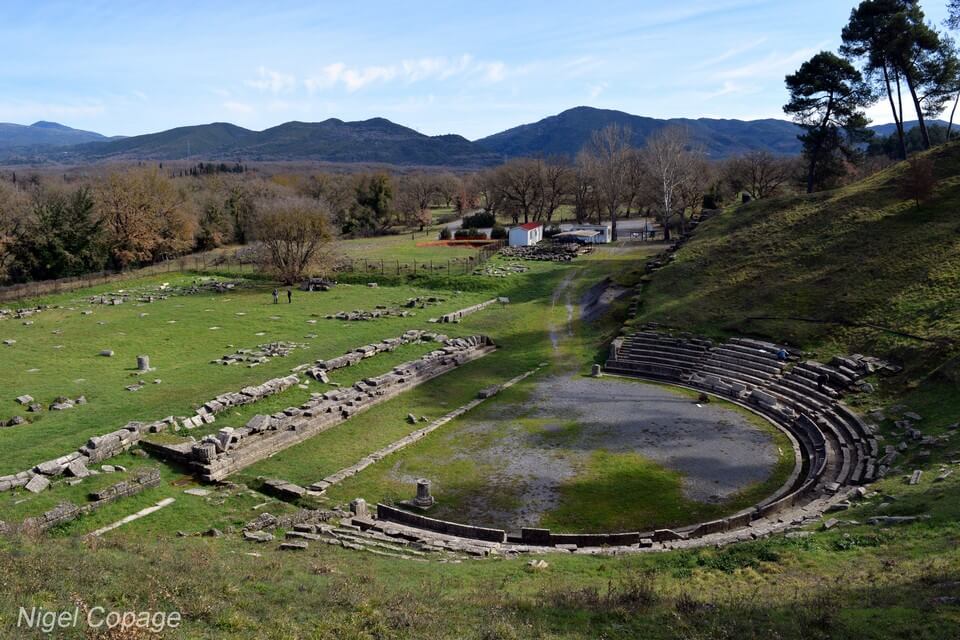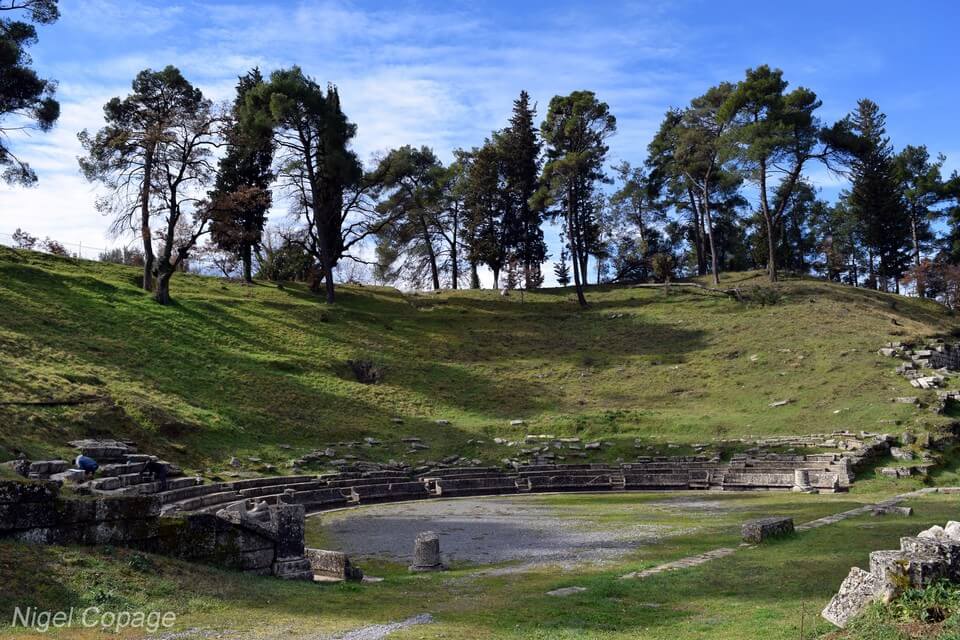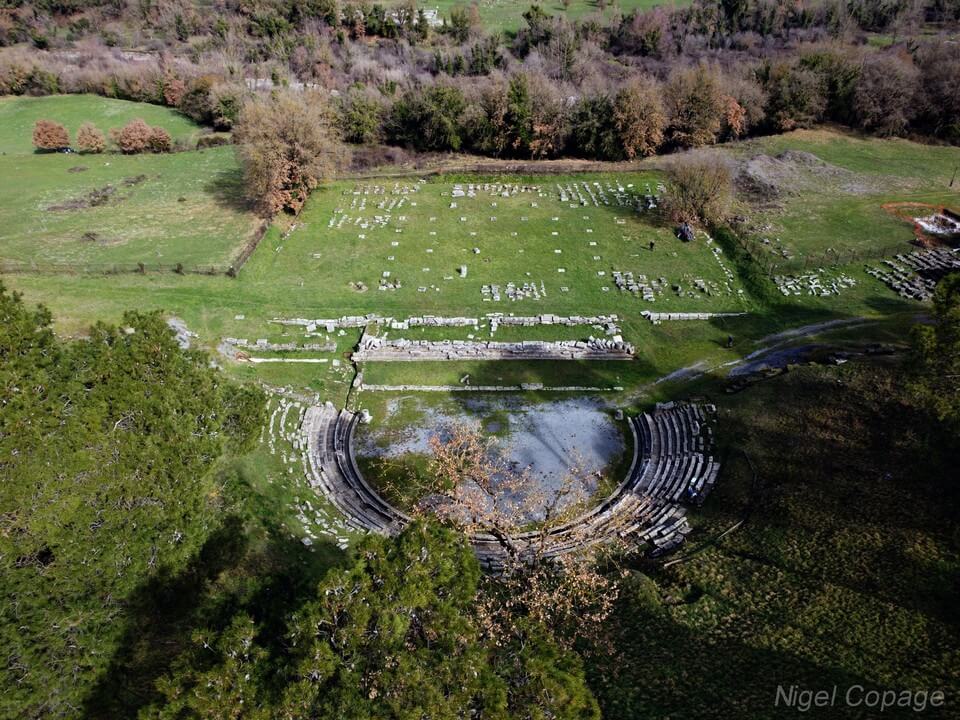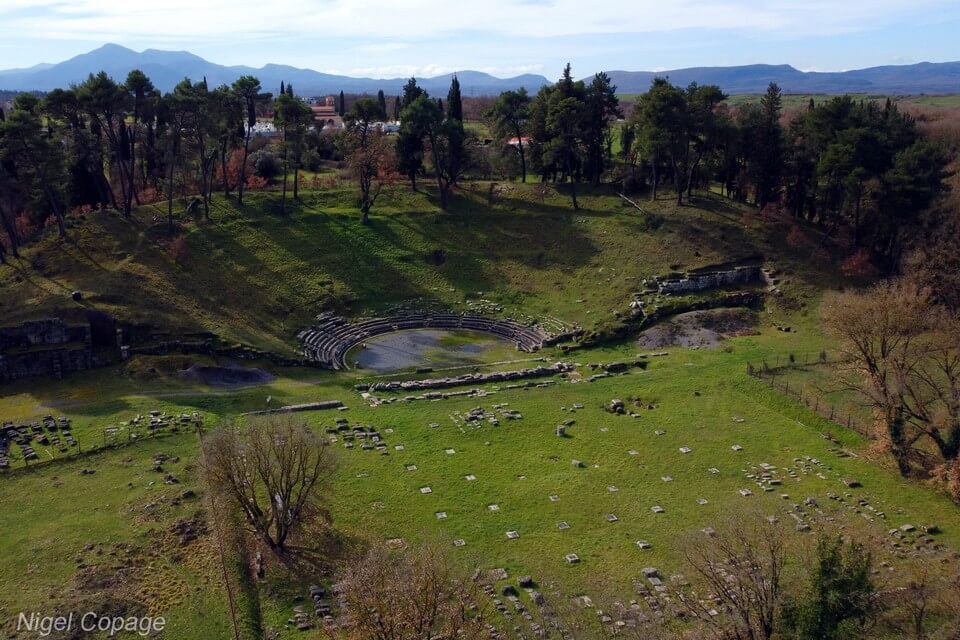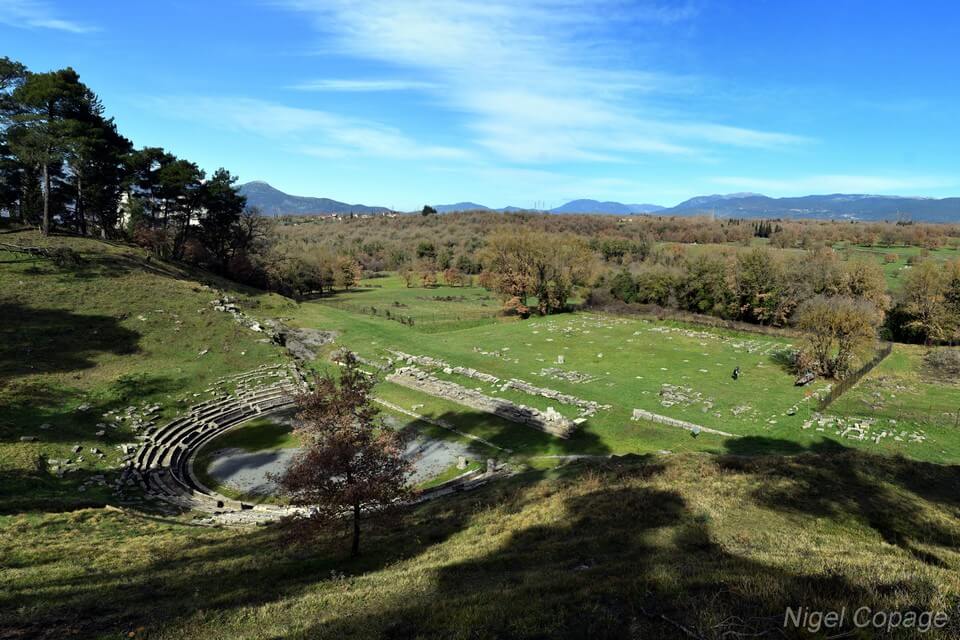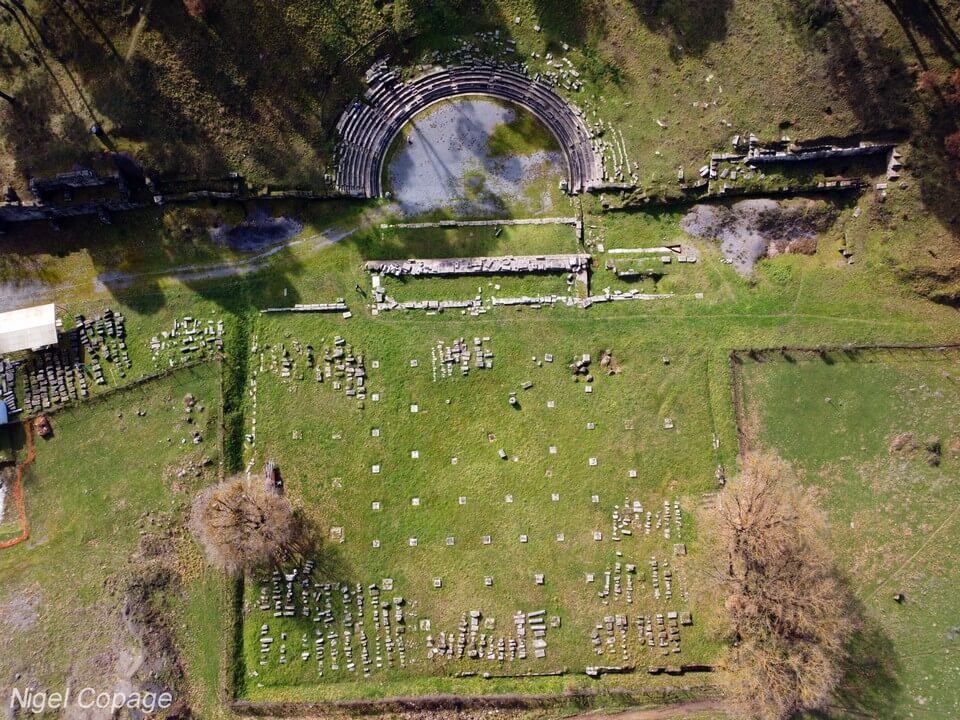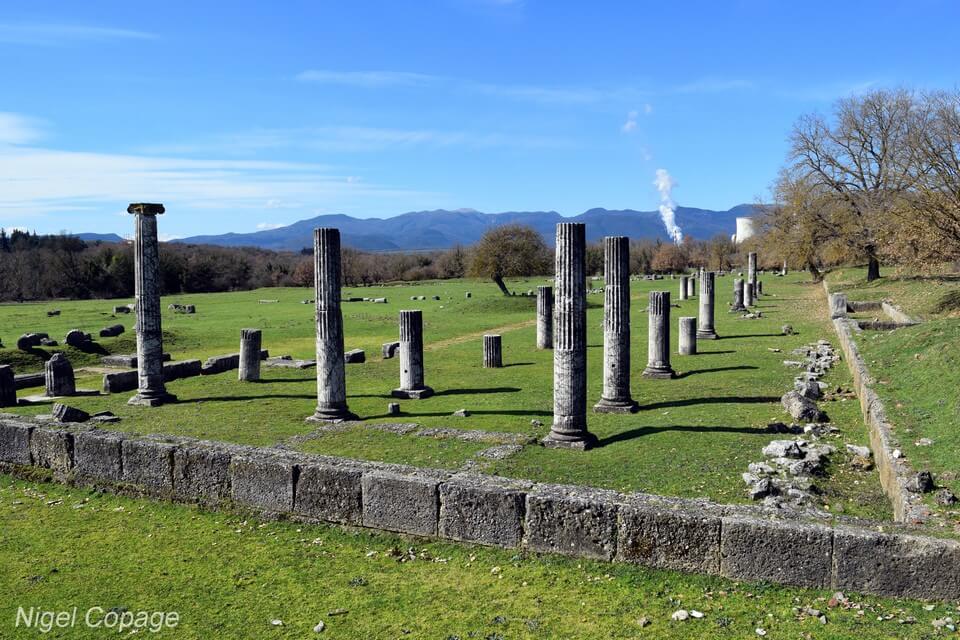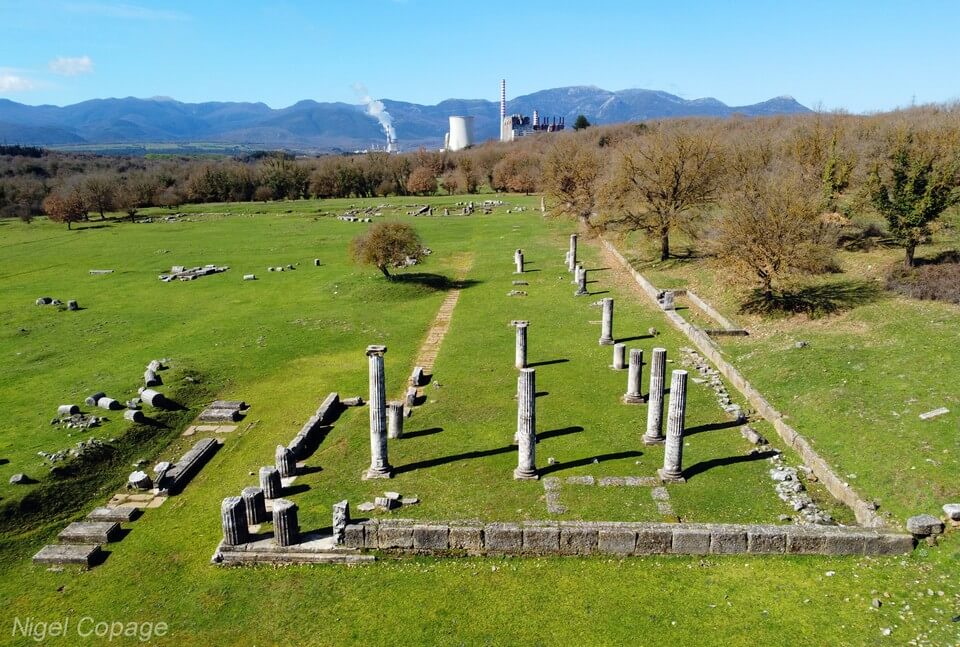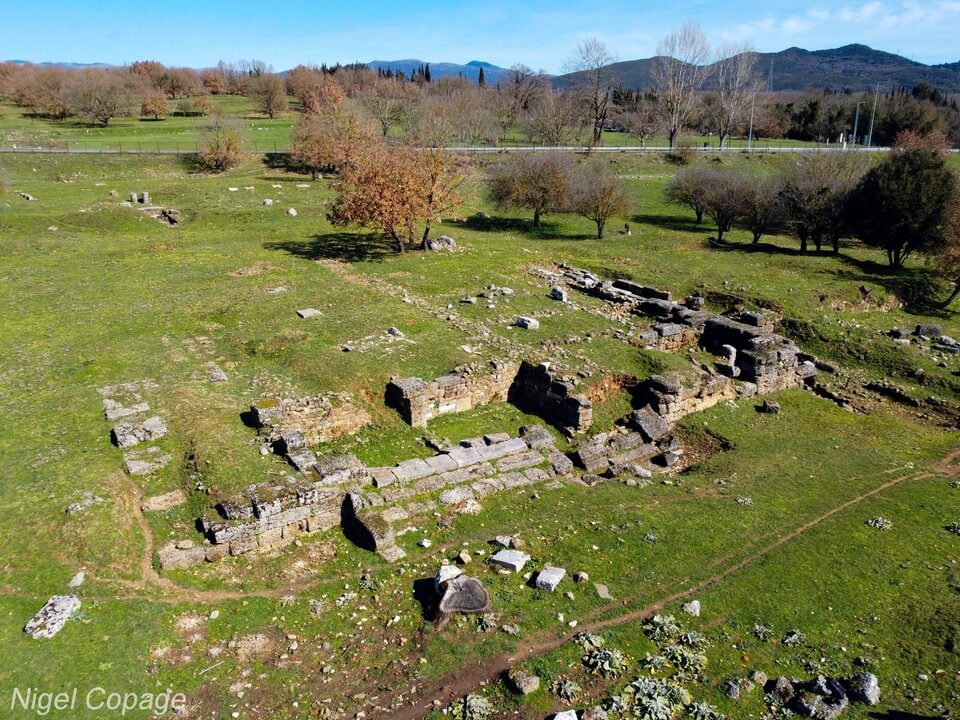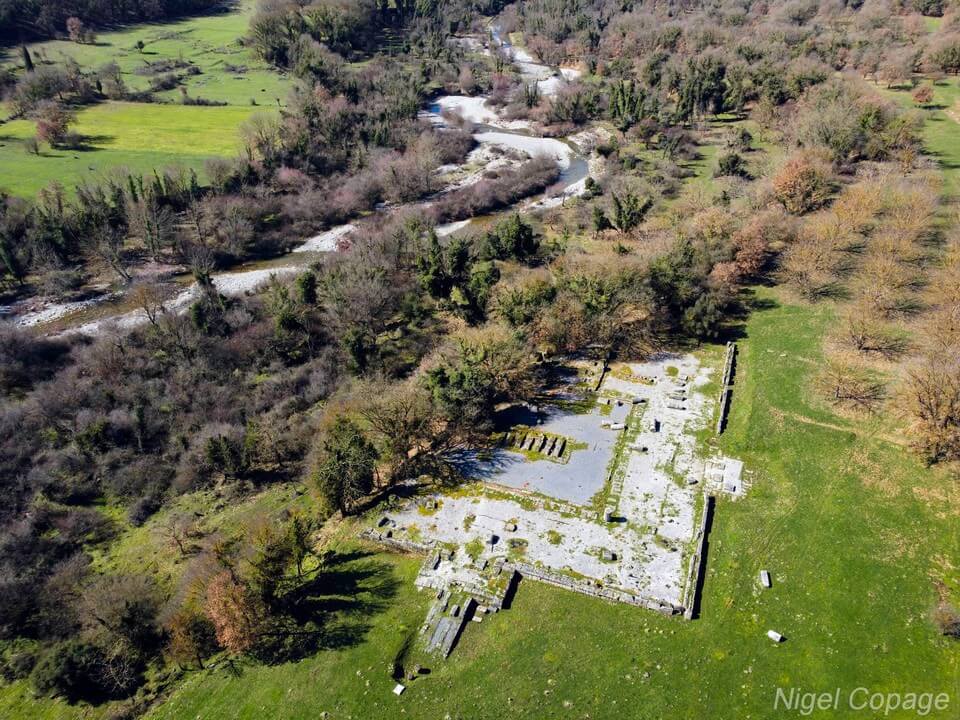
Although it was relatively short-lived Megalopolis was a major city in Ancient Arcadia. It was founded by Thebans after their victory against Spata and was the capital of the Arcadian League. It occupied an extensive site either side of the Alfeios river and among the many civic buildings was a theatre which was the largest then in Greece.
History
Megalopolis was founded in 371 BC. The background was that the Thebans had just defeated the Spartans at the Battle of Leuctra and the leading Theban general, Epaminondas, wanted to change the strategic balance by creating a new city which would act as a counterbalance to Sparta.
Construction took around 10 years and the city was forcibly populated by the inhabitants of some 40 villages and towns in the area. It then became the capital of the newly established “Arcadian League” and was supported by a large contingent of Theban soldiers.
The new city was very extensive and covered an area on either side of the Elisson river, a tributary of the Alfeios, the longest river in the Peloponnese. The total length of the walls are known to be around 8 or 9km although up to now no trace of them has been found. The theatre was located on the south side of the river and was the largest in Greece at the time with a capacity of over 20,000. The reason for its size was that it was also used for political meetings to which any of the citizens could attend. Directly opposite the theatre was the Thersilion, the assembly hall.
North of the river was the agora which included the sanctuaries of Sotiris Zeus, Lykaios Zeus, the Temple of Akakisios Hermes and the Myropolidos Stoa. The Philipeio Stoa was an arcade built to honour Philip II of Macedonia who had allied with Megalopolis against the Spartans and who had visited and stayed at the city as, later, did his son Alexander the Great.
After the city’s construction the Spartans tried repeatedly to conquer it but each time were driven back. But they were finally successful after a surprise attack in 223 BC which was in violation of a peace treaty. After capturing the city the Spartans killed many of its inhabitants and destroyed most of the buildings. Although Megalopolis was subsequently rebuilt it never regained its former importance and went into gradual decline.
When the Greek geographer/historian visited Megalopolis in 15 BC it was just an insignificant small town and by the time Pausanias passed by in 170 AD it was mostly deserted.
During the Byzantine era many of the ancient temples were destroyed as they were considered idolatrous. Throughout this period and the following four centuries of Ottoman rule the town was known as Sinano but after Greece became independent it was renamed Megalopolis by royal decree.
The remains of ancient Megalopolis are just outside the modern town on the road to Karytaina and are either side of the bridge over the river Alfeios.
Excavations and Restoration
Excavations were first carried out by the British School from 1890 to 1893 and were resumed in the 1990s by Professors Lauter and Spyropoulos.
The Ancient Theater is currently being restored as part of an EU programme funded by UNESCO.
Click here for information on tickets, opening hours etc
